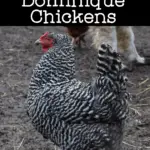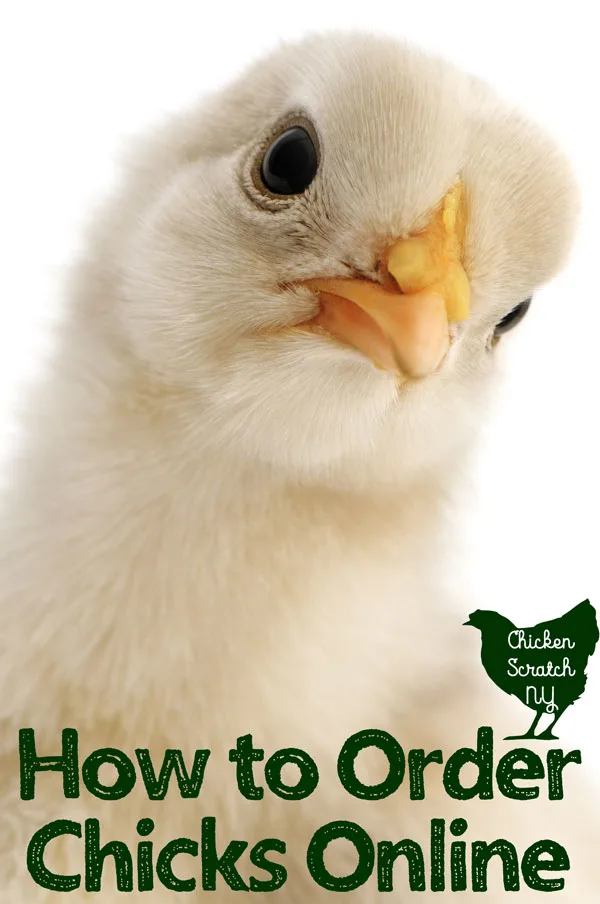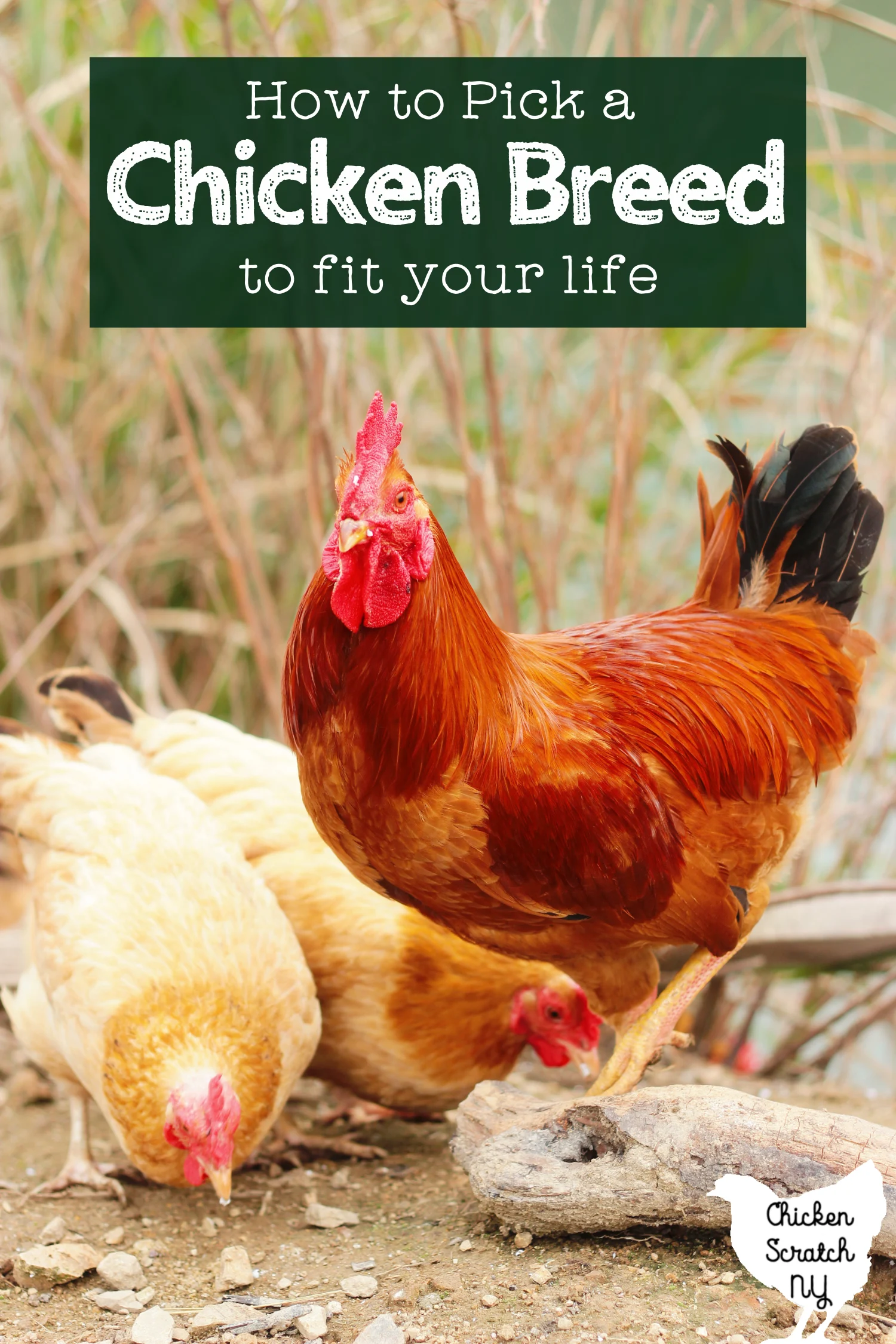Dominique chickens are often overlooked but these fascinating birds have an incredible personality that matches their origin story! If you’re looking to add a new breed to your flock you can’t go wrong with this historical American breed!
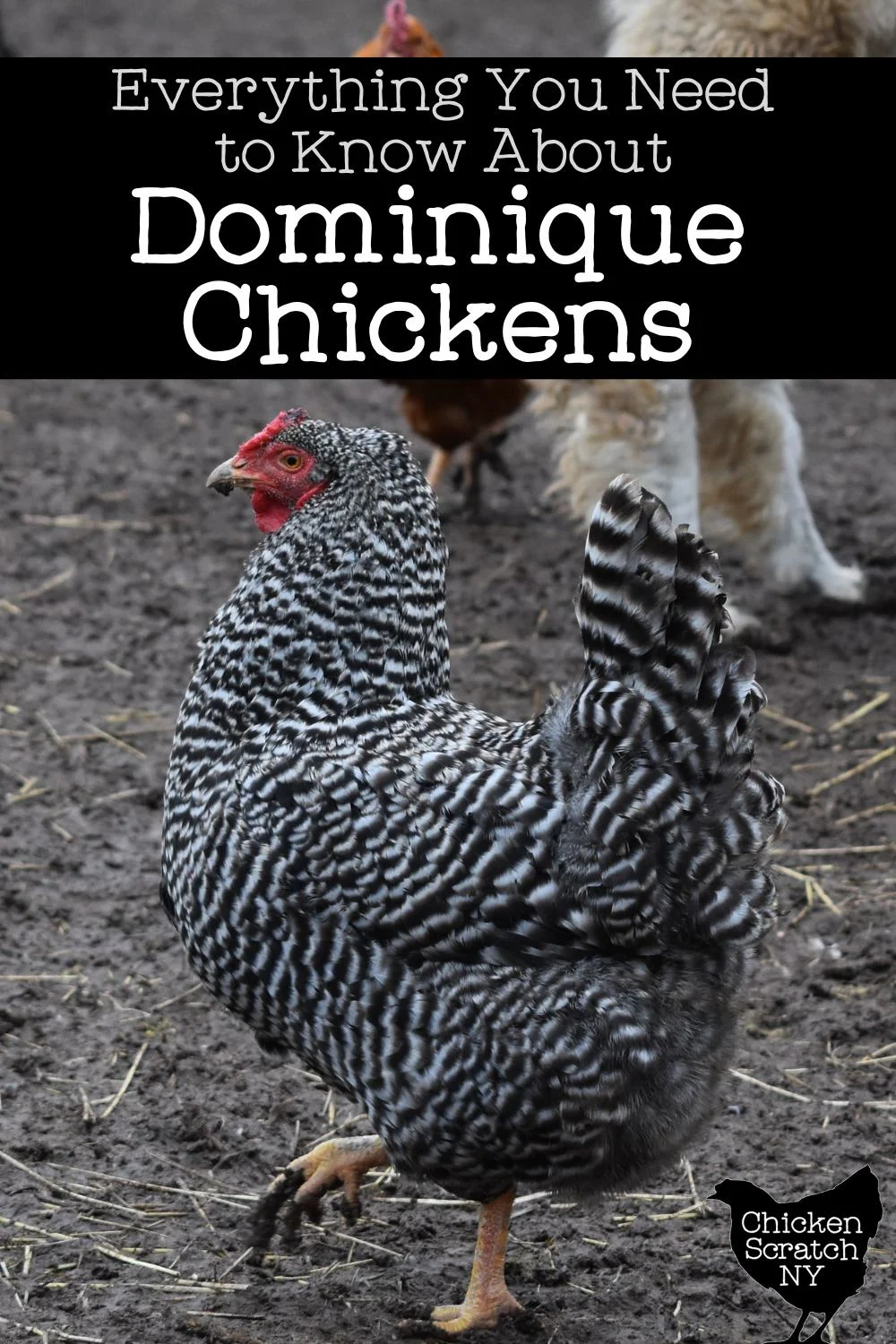
I’ve always been fascinated by the history of livestock and the way the birds I love today have come to exist. Today’s flocks of heritage chickens are literally living history.
One of my favorite heritage breeds is the Dominique, not only for their story but also because the birds themselves are awesome. I’ve had a handful in my flock for years and they’re incredibly nosy and friendly birds.
Looking through my random garden and farm photos there is almost always a Dominique hen, not because I have a lot of them, but just because they’re always in the action.
History of the Dominique Chicken
As with most events that took place hundreds of years ago, things are a bit blurry when it comes to the origin of the Dominique breed. Regardless, they are recognized as the oldest American breed of chicken.
The two main theories are that the original birds were brought to America by Pilgrims, or that they were bred from birds kept in the French colony of Saint Dominique (what is now Hati).
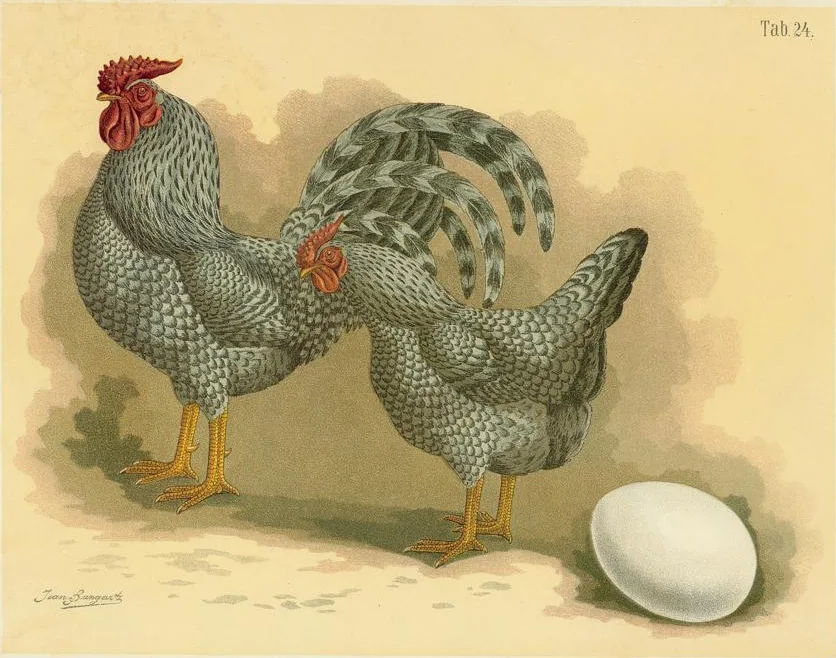
Whichever origin story is true, they’ve been in America since at least the 1750s.
Dominiques became really popular in the 1820s and it’s actually one of the breeds used to develop their chicken doppelganger, the Barred Rock in the 1860s.
Another fun historical fact, Dominiques were displayed at the first American Poultry Show held in 1849.
They are also described in the first edition of the American Standard of Perfection (which you can read from the comfort of your own home thanks to its appearance on Google Books) written in 1874.
The Dominique and the Barred Rock have a pretty complicated history, today most people wouldn’t be able to tell you the difference between the two.
Part of the complication comes from the original birds being shown in the same category as ‘barred’ with no other distinction. They put an end to that in 1870 when they declared the difference between the breeds was all in the comb.
Dominiques have a very distinct and unusual rose comb while the Barred Rock has a large single comb.
This seems like a good time to throw out there that the breed is “Plymouth Rock” and barred is the coloration. The barred coloration is the original but over time other color variations were developed including white, buff, Columbian, and blue.
Getting back to the stars of the show, the Dominquie and their roller coaster of popularity. The breed stayed popular into the 1920s and through the Great Depression when their hardy nature kept them going.
Then we hit the first major decline, Dominiques were never used commercially and their numbers dwindled. By the 1970s this historical breed was down to 4 flocks.
Thanks to the owners of those four flocks, the American Livestock Conservancy, and the newly created Dominique Club of America the breed was brought back from the brink.
The breed continued to recover and today the American Livestock Conservancy lists them under the “Watch” category meaning there are fewer than 5,000 breeding birds and the estimated global population is less than 10,000.
Appearance
Unlike a lot of popular breeds, Dominiques only come in one color pattern. The barred or in this case ‘cuckoo’ pattern is created by alternating stripes of dark gray/black and white on their feathers.
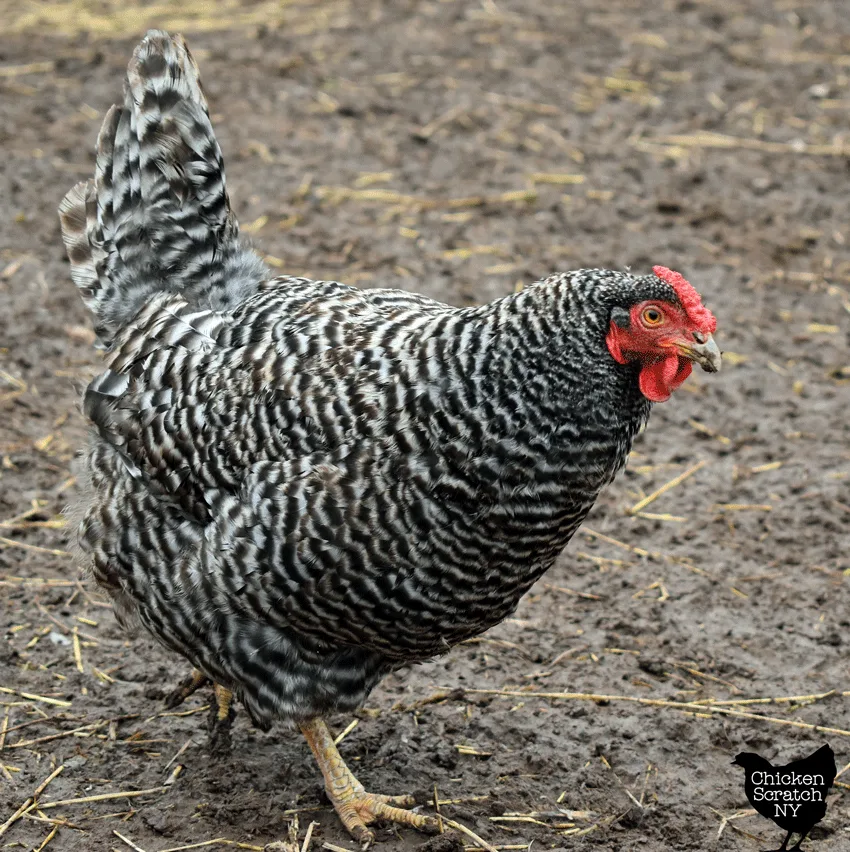
The barred pattern is much cleaner than on Cuckoo Marans (I usually describe them as ‘blurry’) but slightly less organized than a Barred Rock with more white in the banding.
They have clean yellow legs (no feathers), yellow beaks, small wattles, and a rose comb with a spike on the end (like Robin Hood’s hat). The small comb makes them great for cold climates where frostbite is a concern.
They’re what I call ‘chunky mamas’ with thick, wide-set bodies. The hens weigh around 5 pounds and the roosters average 7 pounds.
Dominiques are also known for having close feathering, meaning they hold their feathers tightly against their bodies. Breeds like Cochins and Silkies often look much larger than they are due to the fluffy feathering, but with a Dominique what you see is what you get.
It’s one more characteristic that makes them a great choice for cold climates.
Learn more about 3 Hardy Heritage Breeds Bred for Cold Weather
Dominique Vs Barred Rock
At first glance, you might confuse the Dominque with a barred rock and it’s understandable. They’re roughly the same shape, have similar coloring and the Dominique is one of the breeds used to develop Barred Rocks.
The big differences come down to the comb and the feather pattern.
Barred Rocks have a large, single comb and barred coloring. The ‘barred’ in their name actually refers to the color/feather pattern and you can also get white, Columbian and partridge Rocks.
The actual breed name is ‘Plymouth Rock’ but it’s usually shorted to just ‘Rock’ and with Barred Rocks being the most common, a lot of people don’t even realize they come in other flavors.
Dominique chickens have a small rose comb and less clear banding on their feathers.
Personality
My experience with the Dominique breed is limited to the hens, but if you’re in this for eggs that’s probably what you’re interested in anyway.
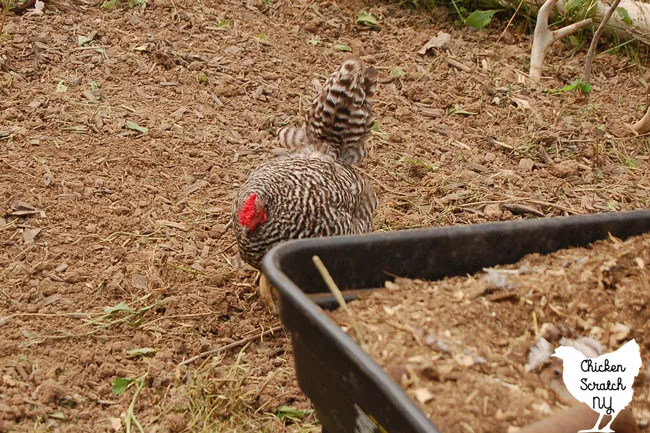
Dominique hens are super nosey and curious. I have several that pretty much stalk me as I do yard and garden work.
While I know they’re just waiting for worms, I like to pretend they love me. They’re friendly birds that love to scratch and make great foragers.
The barred patterning supposedly makes them less visible to predators, and that’s probably why my free-ranging Dominique girls stick around for so long.
They’re active birds that do great when allowed to roam but from experience, they’re more likely to stay where the action is than go on long expeditions.
Production
Chances are pretty good you’re reading about them because you want a fun and friendly egg layer, and that’s great because even though they’re technically a dual-purpose breed they’re more successful in one purpose than in the other.
Dominique hens are good layers and will provide you with approximately 180-260 medium-large brown eggs a year. That puts them on par with some of the best heritage layers.
In my opinion, they aren’t big enough to make a viable meat option, but obviously, you can eat them if you want (or you happened to have way too many roosters and a craving for chicken noodle soup).
Read more about Dual Purpose Chickens
I’ve never had any of my Dominique hens go broody but that could be based on bloodlines. All of my birds are from Cackle Hatchery and if you get yours from another source they could be more prone to broodiness.
I have plenty of birds willing to hatch out the next generation and I’d rather my Dominique girls keep laying eggs and living their best lives scratching up my newly planted seed beds.
Read more about Broody Hens
Are Dominiques Right for You?
I can’t give you an unbiased opinion because I’m clearly a Dominque fangirl. But yeah, you should get some.
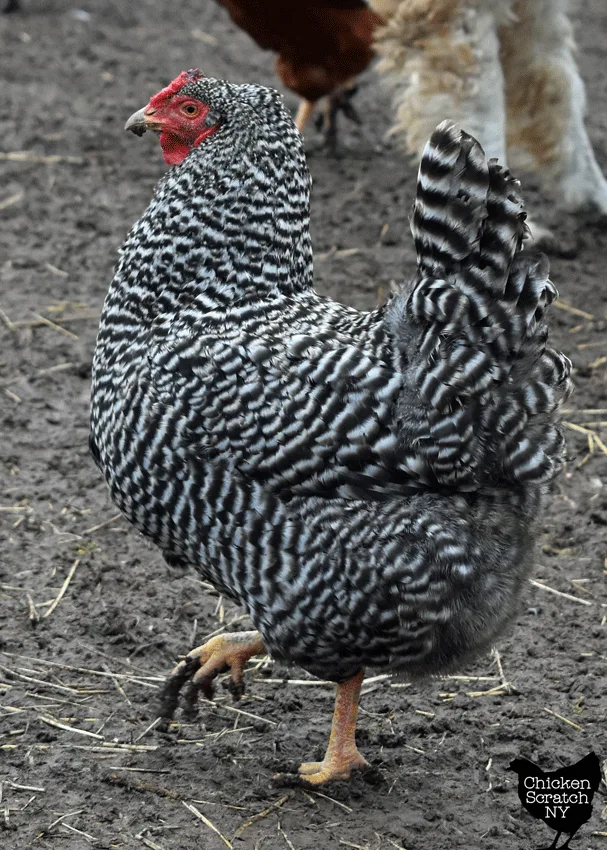
Even as a chicken size queen (I like my birds big and fluffy) I’ll be keeping Dominiques in my flock as long as I have birds for their nosy and friendly personalities.
Their smaller size makes them less intimidating than a giant bird making them a great choice for people new to keeping chickens or people with kids.
You can’t beat them for historical drama and of course, they’re great at laying eggs!
Looking for more info on specific chicken breeds from someone who has raised a lot of birds?
Looking for more information? Check out my Chickens page or start here:

